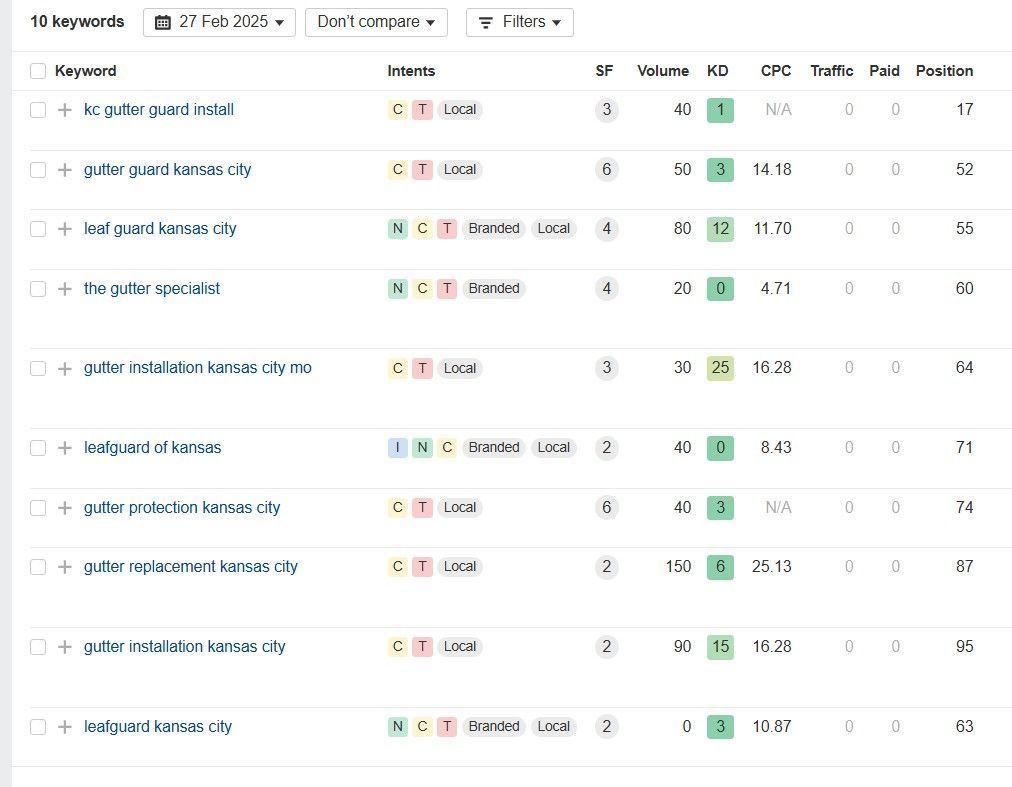Technical SEO Checklist: Advanced Speed Optimization Secrets from 7-Figure Online Businesses
Technical SEO might seem overwhelming, but it's the backbone of any successful website's search engine performance. As a digital marketer who has optimized hundreds of websites, I've seen firsthand how proper technical optimization can transform a site's visibility and user experience.
A comprehensive technical SEO audit addresses three critical areas: site crawlability, page speed optimization, and mobile responsiveness - these elements form the foundation of your website's search engine success. The technical SEO checklist has evolved significantly in 2025, with search engines placing greater emphasis on user experience signals and Core Web Vitals.
Getting technical SEO right means more than just checking boxes - it's about creating a seamless experience for both search engines and users. When implemented correctly, technical optimization can dramatically improve your site's ranking potential and conversion rates.
Key Takeaways
- Technical optimization directly impacts search visibility and user satisfaction
- Regular site audits help identify and fix performance bottlenecks before they affect rankings
- Implementation of Core Web Vitals and security protocols creates a competitive advantage
Establishing a Robust Technical SEO Foundation
Building a strong technical foundation for your website ensures search engines can effectively crawl, index, and rank your content while providing users with an optimal experience.
The Significance of Technical SEO
Technical SEO analysis forms the backbone of your website's search performance. Without proper technical optimization, even the best content can remain hidden from search engines.
A comprehensive technical SEO audit examines crucial elements like HTTP status codes, SSL certificates, and mobile responsiveness.
Search engines prioritize websites that meet their technical requirements. Clean code, proper URL structure, and efficient internal linking help establish authority and trust.
Understanding Crawl Budget and Site Speed
Search engines allocate specific resources to crawl your website. Managing crawl budget efficiently ensures important pages get indexed quickly.
Page speed directly impacts user experience and search rankings. Key speed factors include:
- Image optimization
- Browser caching
- Code minification
- Server response time
Regular monitoring of Core Web Vitals helps identify performance bottlenecks and areas for improvement.
The Role of XML Sitemaps and Robots.txt Files
XML sitemaps act as roadmaps for search engines, highlighting important pages and their relationships. Dynamic sitemaps automatically update as content changes.
The robots.txt file provides clear directives to search engine crawlers:
- Which pages to crawl
- Which sections to ignore
- Crawl rate specifications
Strategic implementation of both files ensures efficient crawling and proper resource allocation.
Advancing User Experience and Site Structure
A well-structured website with smooth navigation and fast loading speeds directly impacts rankings and keeps visitors engaged. Technical excellence in these areas creates a foundation for SEO success.
Optimizing for Mobile-Friendliness and Core Web Vitals
Mobile optimization starts with responsive design principles that adapt seamlessly across devices. Test your site using Google's Mobile-Friendly Test tool to identify potential issues.
Core Web Vitals require careful attention to three key metrics:
- Largest Contentful Paint (LCP): Keep under 2.5 seconds
- First Input Delay (FID): Maintain below 100ms
- Cumulative Layout Shift (CLS): Target less than 0.1
Optimize images, leverage browser caching, and minimize JavaScript execution to improve these scores.
Crafting a User-Centric Site Architecture
Create a flat site structure where important pages are no more than 3 clicks from the homepage. This helps both users and search engines find content efficiently.
Use clear URL structures that reflect your site hierarchy:
example.com/category/subcategory/product
Place high-value content prominently in the navigation menu. Remove or redirect dead ends and orphaned pages that can trap users.
Internal Links and Breadcrumbs for Navigation
Strategic internal linking distributes page authority and guides users through related content. Place contextual links within body content rather than relying solely on navigational menus.
Implement breadcrumbs to show users their exact location:
Home > Services > SEO > Technical Audits
Use descriptive anchor text for internal links that clearly indicates the destination page's content. This helps search engines understand topic relationships between pages.
Review your internal link structure quarterly to identify and fix broken links or redirect chains that can harm user experience.

Enhancing Visibility Through Content and Links
Strategic content optimization and link building create a strong foundation for search visibility, while proper technical implementation ensures search engines can effectively crawl and index your content across languages and regions.
Mastering Content Optimization and Marketing
Content optimization starts with identifying clear search intent to match user needs. Focus on creating comprehensive content that naturally incorporates relevant keywords while maintaining readability.
Break content into scannable sections with descriptive headings and bulleted lists to improve user engagement. Use internal linking to connect related topics and distribute page authority.
Key optimization elements:
- Engaging meta titles and descriptions
- Strategic keyword placement in H1-H6 tags
- Alt text for images
- Schema markup for rich snippets
- Mobile-friendly formatting
Utilizing Backlink Analysis to Outperform Competitors
Thorough backlink analysis reveals opportunities to strengthen your link profile. Monitor competitors' backlink sources to identify potential link building targets.
Focus on acquiring links from relevant, authoritative websites in your industry. Quality guest posting, resource link building, and broken link reclamation provide sustainable link acquisition strategies.
Track metrics like Domain Authority, trust flow, and citation flow to evaluate link quality. Remove or disavow toxic backlinks that could harm rankings.
Effective Use of Redirects and Tagging Multiple Languages
Implement proper 301 redirects to maintain link equity when moving or consolidating pages. Monitor redirect chains and fix any loops or excessive redirect hops.
Clear language targeting helps search engines serve content to the right audience. Use hreflang tags to specify language and regional variants of your content:
<link rel="alternate" hreflang="es" href="example.com/es/" />
<link rel="alternate" hreflang="en" href="example.com/en/" />
Create dedicated content versions for each target language rather than using automated translation. This ensures natural language optimization and cultural relevance.
Tools and Analytics for Ongoing SEO Efficiency
The right combination of SEO tools and analytics platforms helps identify issues early and keeps your technical optimization running smoothly. Tracking key metrics through reliable data sources ensures you can make informed decisions about your site's performance.
Google Search Console and Analytics Insights
Google Search Console provides essential data about how search engines interact with your site. Monitor crawl stats, indexing status, and mobile usability issues directly from Google's data.
Track your click-through rates and average positions for specific keywords. This helps identify which pages need optimization and where you're losing potential traffic.
Set up custom reports in Google Analytics 4 to monitor user behavior metrics like bounce rate, time on page, and conversion paths. These insights reveal how technical issues impact real user experiences.
SEO Plugins and Tools for Streamlined Management
Professional SEO tools like SEMrush and Ahrefs offer comprehensive site audits that catch technical problems before they affect rankings. Run weekly scans to identify broken links, missing meta tags, and crawl errors.
Install a robust SEO plugin like Yoast SEO or Rank Math to manage on-page elements efficiently. These tools provide real-time optimization suggestions while you create content.
Use specialized rank tracking tools to monitor SERP positions across different locations and devices. This data helps measure the impact of your technical improvements on actual search visibility.
Consider tools like Screaming Frog for deep technical audits. It crawls your site structure and identifies issues with canonical tags, redirect chains, and XML sitemaps.
Contact Us
Our Newsletter
We will get back to you as soon as possible.
Please try again later.
Subscribe For Newsletter
All Rights Reserved | Powered By Smooth Marketing Media
